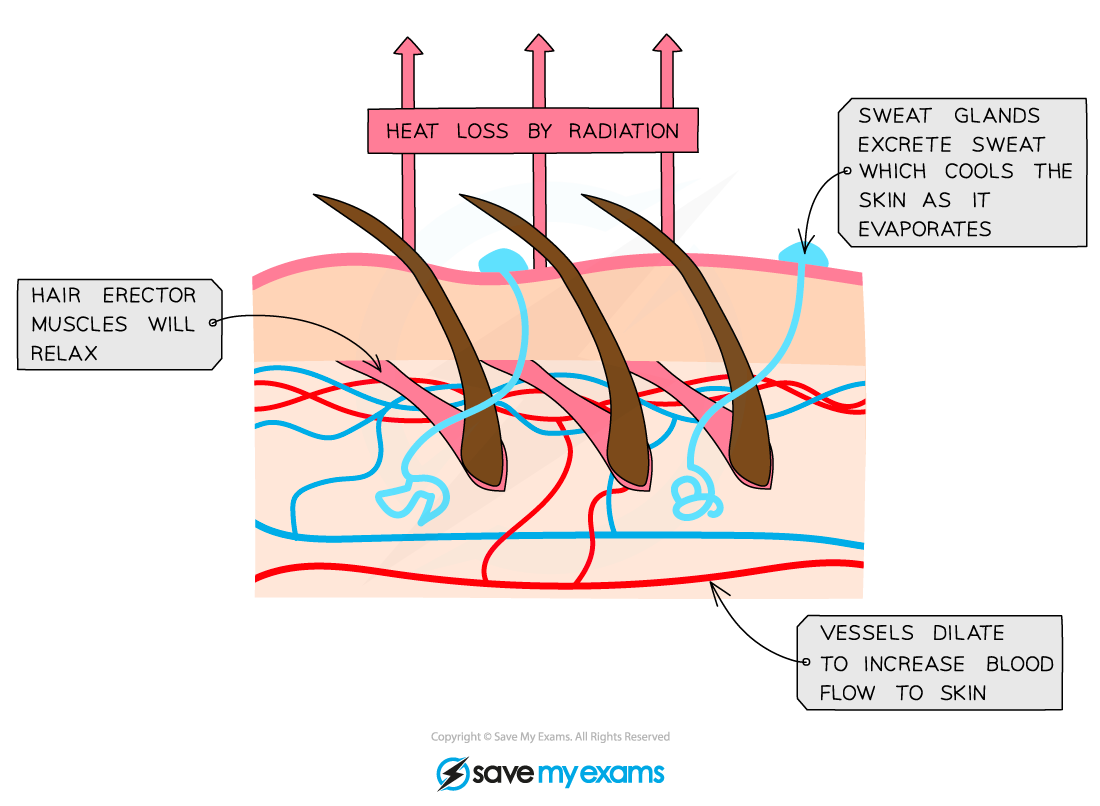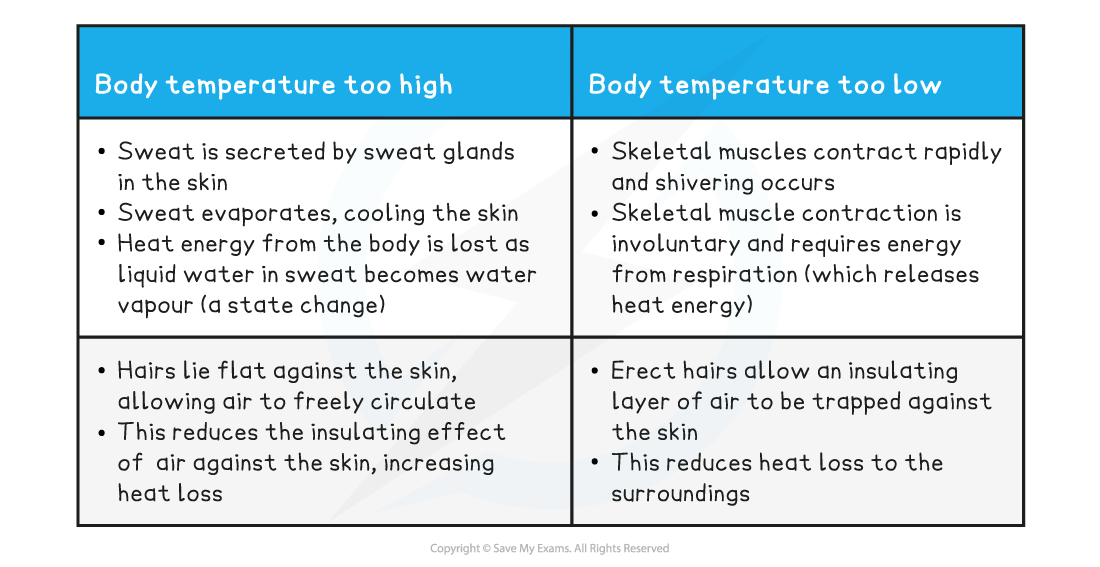- Water loss via the lungs (during breathing) or skin (during sweating) cannot be controlled, but the volume of water lost in the production of urine can be controlled by the kidneys
- The nephrons of the kidneys contain structures called tubules, through which filtrate passes on its way to the bladder
- Water can be reabsorbed from this filtrate as it passes along these tubules (known as collecting ducts)
- If the water content of the blood is too high then less water is reabsorbed, if it is too low then more water is reabsorbed
- In a similar way to blood temperature being monitored, blood water content is detected by receptors in the base of the brain as blood passes through it
- The pituitary gland in the brain constantly releases a hormone called ADH (antidiuretic hormone)
- ADH affects the permeability of the collecting ducts to water
- The quantity of ADH released depends on how much water the kidneys need to reabsorb from the filtrate
- If the water content of the blood falls below a certain level:
- The blood is too concentrated
- Receptors detect this and stimulate the pituitary gland to release more ADH
- This causes the collecting ducts of the nephrons to become more permeable to water
- This leads to more water being reabsorbed from the collecting ducts
- The kidneys produce a smaller volume of urine that is more concentrated (contains less water)
- If the water content of the blood rises above a certain level:
- The blood is too dilute
- Receptors detect this and stimulate the pituitary gland to release less ADH
- This causes the collecting ducts of the nephrons to become less permeable to water
- This leads to less water being reabsorbed from the collecting ducts
- The kidneys produce a larger volume of urine that is less concentrated (contains more water)
转载自savemyexams













